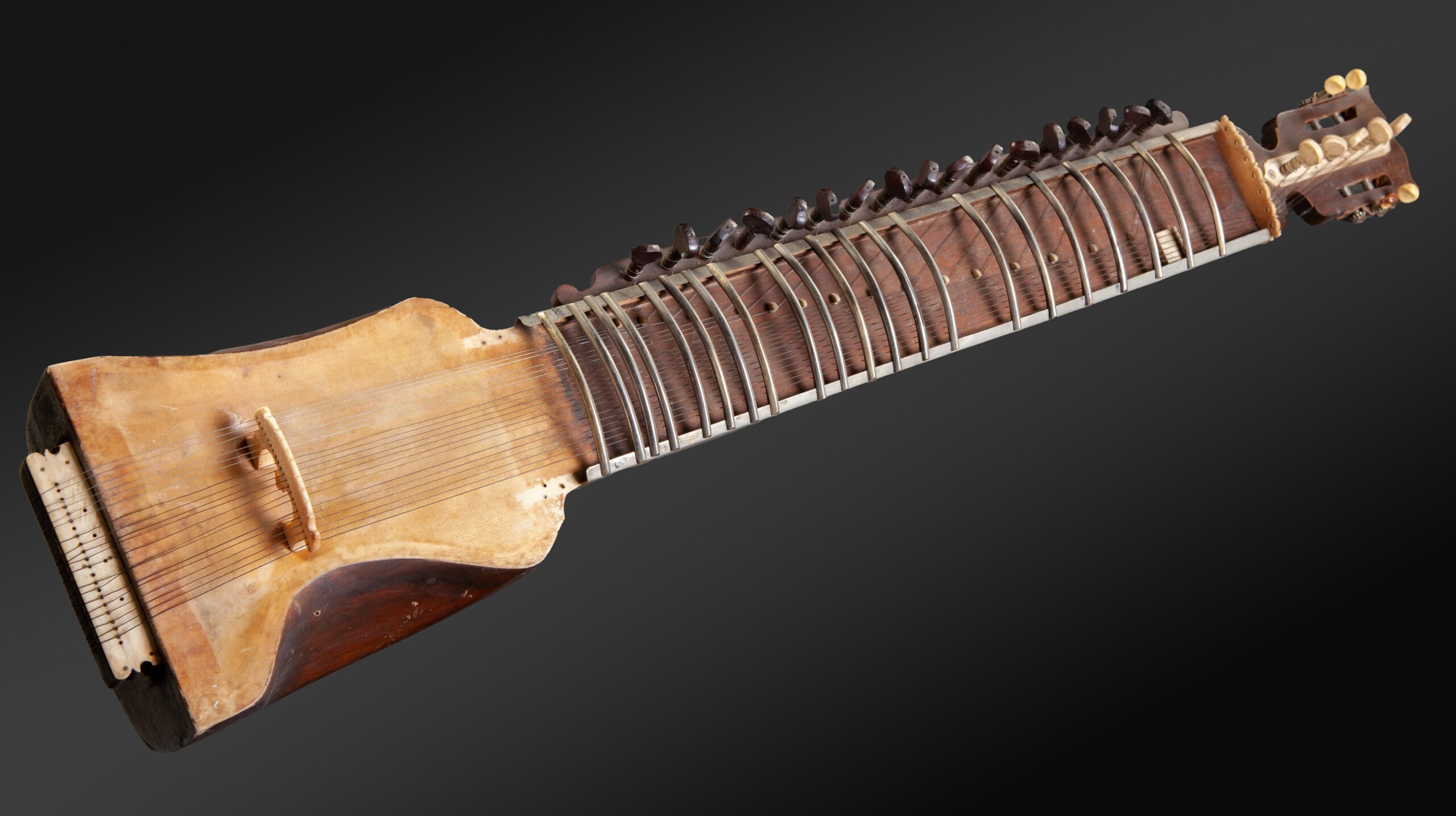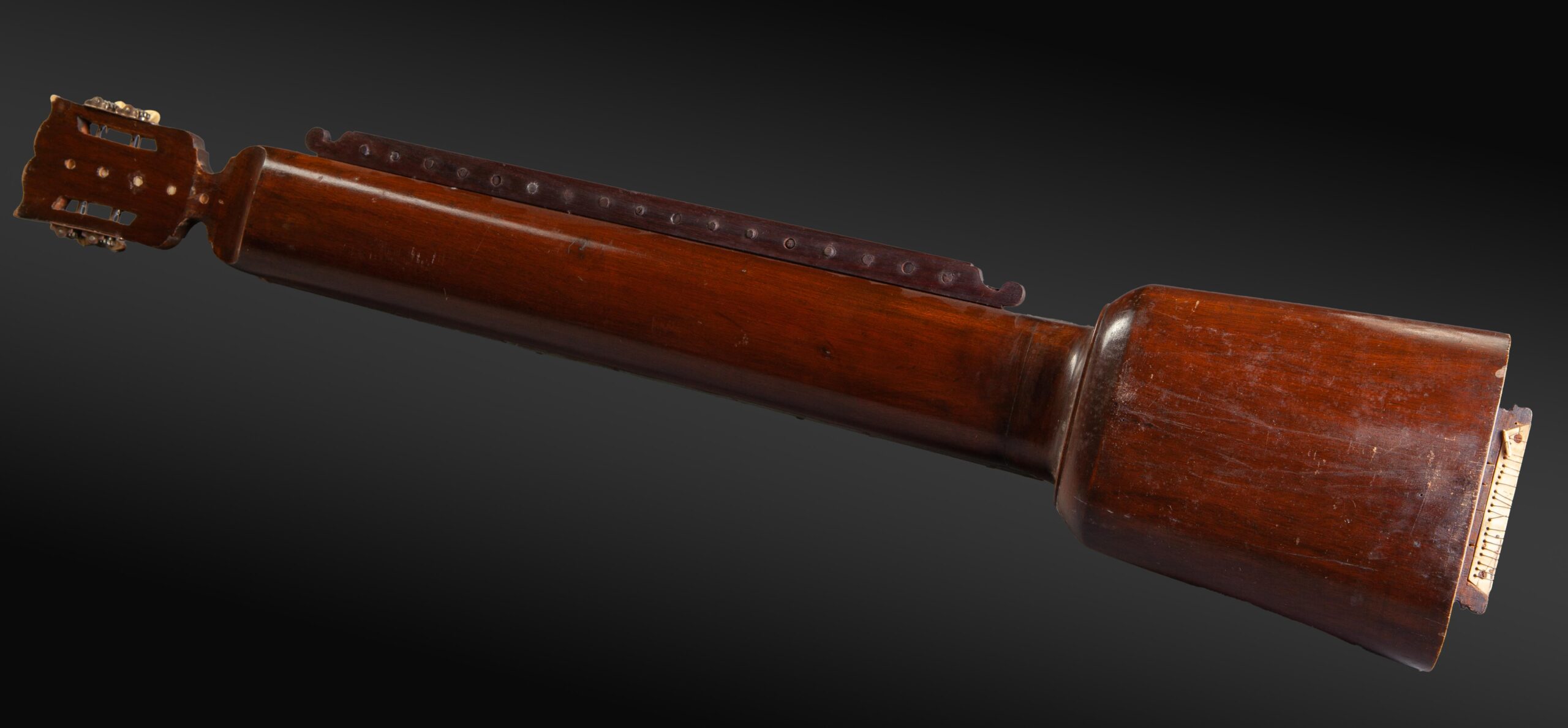DILRUBA
India 20th century.
This fiddle, whose construction and playing are between the sarangi and the sitar, was described in the 19th century under the name of Kamancha, then subsequently, the name of Dilruba “which delights the heart” would have been awarded by the famous Punjabi musician Mahant Gajja Singh (18.. – 1922)
The body is hollowed out of a block of mulberry, over which a goat’s skin is stretched. It is extended by a large neck along which seventeen tuning pegs are fixed for the highest sympathetic strings, as well as twenty-one movable frets identical to those of sitars, for the playing strings.
At the top of the neck, the head carries in its center the bone pegs of the lowest sympathetic strings as well as on either side the mechanics of the four playing strings.
Length 94.5cm Width: 17.8cm. Body height: 9.9cm
Bibliography: “Glory of princes, praise of the gods” Exhibition catalog, Music Museum, Paris 2003.

